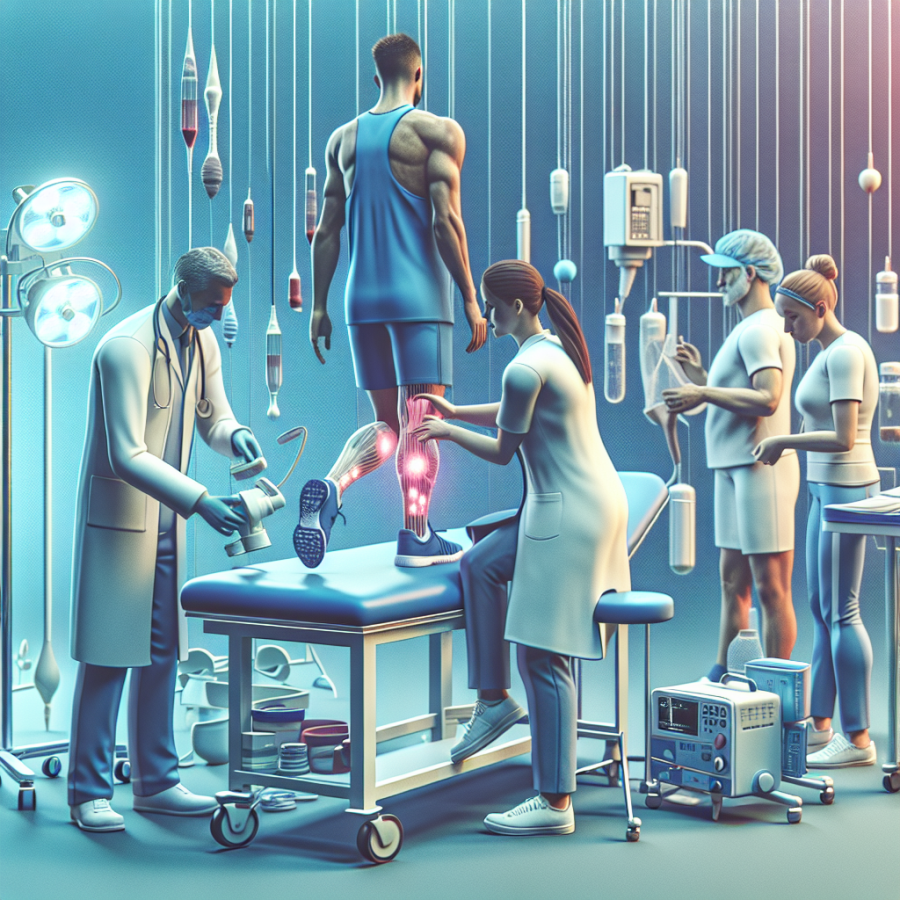2) Recent Breakthroughs Pushing the Boundaries of Sports Medicine
Advancements in sports medicine research are continuously transforming athletes' abilities to recover from injuries and improve their overall performance. Various emerging innovations are proving to be potential game-changers in sports medicine, pushing the boundaries and redefining traditional healing and conditioning approaches.
One of the most promising advancements in sports medicine is the application of regenerative medicine techniques, such as stem cell therapy and platelet-rich plasma (PRP) injections. Originating from the field of biomedical engineering, regenerative medicine focuses on repairing or replacing damaged tissues and organs. In sports medicine, this science has been applied to treat a wide range of sports injuries, from muscle tears to joint disorders. For instance, stem cell therapy is being used to regenerate damaged tissues, while PRP injections serve to stimulate the body's natural healing processes.
A significant breakthrough in sports medicine is the development of 3D printing technology. This revolutionary technology provides a great deal of precision and customization, allowing medical professionals to create specific models of an athlete's anatomy and plan surgeries more accurately. More impressively, 3D printing can also be used to create custom-fit prosthetics and corrective gear that perfectly matches an athlete's physique, potentially improving their safety and performance.
The rise of wearable technology in the fitness industry is another revolutionary advancement in sports medicine. From tracking heart rate to recording calorie burn, these connected devices provide real-time data that helps athletes monitor and manage their health and performance. Additionally, wearable devices can predict potential injuries based on collected data, enabling athletes to modify their training accordingly to prevent such instances.
Gene therapy is also another ground-breaking concept becoming more prevalent in sports medicine. By manipulating an athlete's genetic code, it is possible to enhance their physical capabilities or alter their susceptibility to injury. Although this field is still relatively new and the ethical implications are being debated, the potential benefits of gene therapy are enormous.
The utilization of artificial intelligence (AI) and machine learning in sports medicine is redefining rehabilitation processes and injury prevention strategies. Using AI algorithms, medical experts can analyze movements and identify injury risk factors with a level of accuracy previously unattainable. These technologies can provide recommendations for personalized training programs to prevent injuries and optimize performance.
Telemedicine is transforming how patients receive care, with a potential to revolutionize rehabilitation in sports medicine. Remote consultations and digital therapy sessions are allowing athletes to receive immediate medical attention, irrespective of their geographical location, reducing recovery time and enhancing their overall training experience.
Read also:
The Impact of Cold Storage on Golf Clubs: What to Know
1) Groundbreaking Innovations Transforming Sports Medicine
Sports medicine is an ever-evolving field that never ceases to contribute innovative technologies and treatments. These breakthroughs are constantly being developed to help athletes and physically active individuals of all levels to maintain their optimum performance and aid their healing process. This has revolutionized the way injuries are treated while considerably reducing recovery time.
One of the most talked-about innovations in sports medicine is the advancement of minimally invasive surgeries. This surgical technique boasts smaller incisions, less scarring, reduced pain, and quicker recovery time. It has been successful in treating various sports-related injuries, such as fractures and ligament tears.
Coincidentally, regenerative medicine comes on the list too, using the body's natural healing mechanisms to repair damaged tissues and organs. This approach, typically applied through platelet-rich plasma (PRP) and stem cell injections, is increasingly proving to be viable in treating inflammation, accelerating healing, and decreasing pain. It is particularly effective for tendinous injuries, notoriously slow healers.
Another groundbreaking technology also gaining ground is enhanced imaging diagnostic tools. The introduction of systems like 3D imaging technology and musculoskeletal ultrasound has allowed for more accurate diagnoses. It gives a clearer, more detailed picture of the injury at hand, which helps doctors pinpoint the area that needs treatment. This contributes to developing a more effective treatment plan tailored specifically to the individual.
Telemedicine has emerged as another pivotal innovation in sports medicine. With the ability to conduct online consultations and patient follow-ups, telemedicine has proved a boon especially during the recent global pandemic. It has allowed sports medicine doctors to offer expert advice and guidance to their patients without needing a physical meeting, ensuring continuity of care.
It is also vital to spotlight the role of biomechanics and its use in injury prevention. Researchers are leveraging advanced technologies to study how biologically induced forces can affect the body's structure and functions during physical activities. These innovative insights can then be harnessed to produce a preventative strategy, thus preventing injuries before they even occur.
Further, the advent of wearable technology cannot be overstated. Wearables like smartwatches, fitness bands, and heart rate monitors track several vital stats, including heart rate, distance, pace, and sleep patterns. This enables athletes to keep a close eye on their fitness levels and adjust their training regimes to avoid overtraining, thereby reducing the risk of injury.




